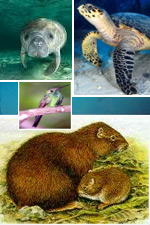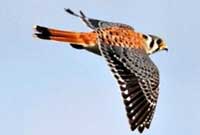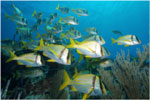Scientific research on the biodiversity of Jardines de la Reina (Gardens of the Queen) has targeted fishes among the conspicuous fauna of the area. Over 250 species have been identified. Groupers,
Read MoreThe Caribbean region is a tsunami and hurricane - prone area. Of course we do not see as many tsunamis as hurricanes, but events that trigger the former are actually very common; just think about the
Read MoreThe Ana Maria keys are located in the Gulf of Ana Maria, an ecosystem limited by the southern coasts of the provinces of Sancti-Spiritus, Ciego de Avila Ciego and Camaguey, the northern keys of the
Read MoreThe American kestrel is the smallest bird of the Falcons family. This small hawk occurs in North America, where it is the most familiar and widespread falcon. It is also found in Central and
Read MoreRemoras are peculiar fish which maximum size is about 1 m. They are better known as suckerfish,for they are commonly found attached to sharks, turtles, rays, whales and other marine mammals. Small remoras
Read MoreThe Tenth Congress on Marine Sciences (MARCUBA) was held at the Havana Convention Center November 16 – 20, 2015. The main goal of the conference was the integration of marine scientists, institutions and
Read MoreInformation on biodiversity is required to undertake ecological studies on communities and ecosystems. As it is a difficult task, certain taxa that represent the main functional groups are targeted. It also
Read MoreThe Cuban Petticoat Palm Tree (Copernicia macroglossa) is endemic to western and central Cuba; it has a solitary trunk that reaches a height of about nine meters. A protruding inflorescence appears in
Read MoreMangrove forests cover an area of 15 2000 km2 in tropical and subtropical regions, less than 1 % of the tropical forests and less than 0.4 % of the world forests. In Cuba, mangroves cover 5%
Read More










